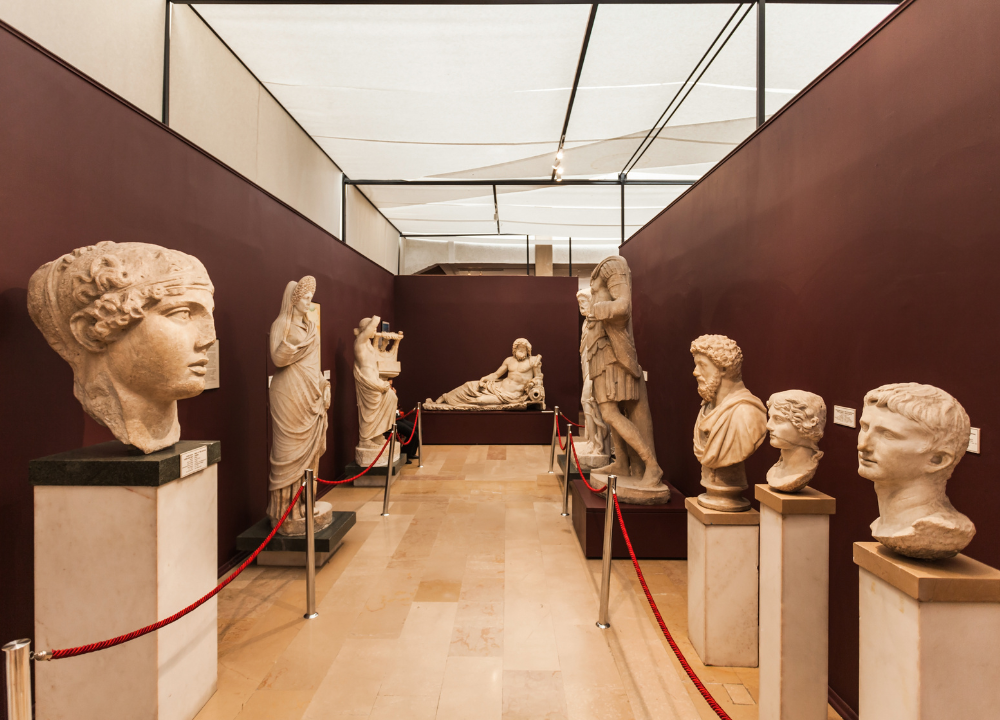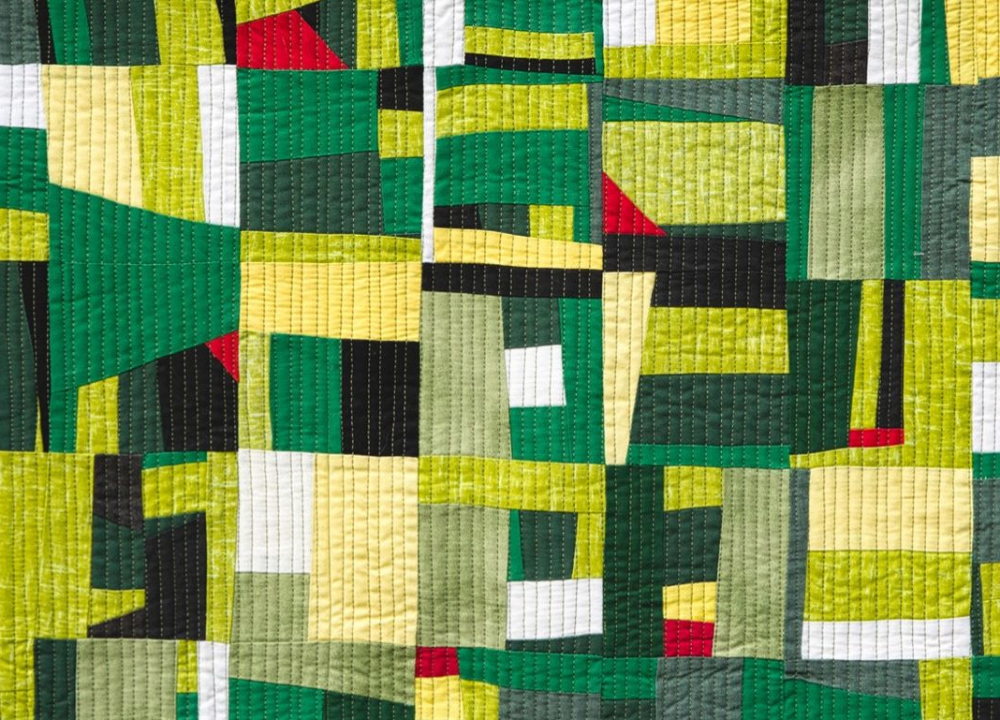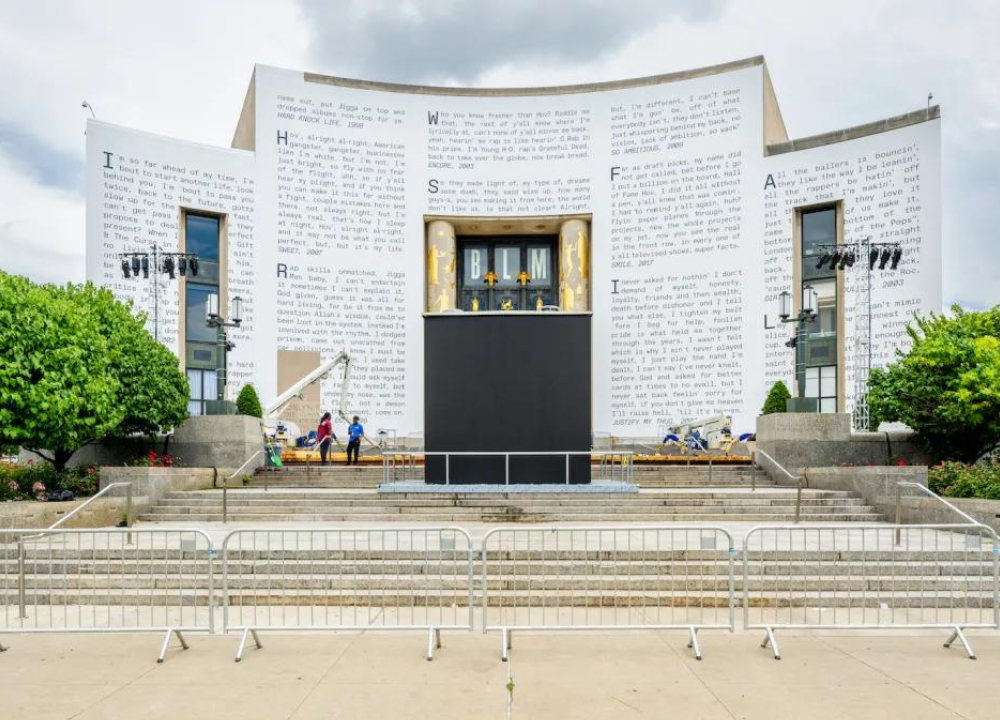These remarkable bronze creations don’t just sit silently; they invite you to dive deep into your imagination. Each piece is a portal into Dali’s mind, filled with bizarre forms and vivid symbols that challenge your perception of art. You’ll find yourself questioning what is real and what is fantasy.
As you read on, you’ll discover how these sculptures reflect Dali’s unique vision and the emotions they stir within you. Get ready to unlock the secrets behind his artistry and see how Dali’s surrealism can transform your understanding of sculpture.
Dali’s Artistic Journey
The Surreal World in Bronze: Exploring Salvador Dali’s Sculptures reveals the depth of Dali’s creative mind. His sculptures are not just art; they are a journey through dreams and reality. Dali’s artistic journey reflects his unique vision. From painting to sculpture, he transformed ideas into tangible forms. Each piece tells a story, inviting viewers to explore their own imaginations.
Dali’s Early Influences
Salvador Dali’s early years shaped his artistic style. He was influenced by various movements:
- Impressionism
- Cubism
- Futurism
- Surrealism
Dali’s fascination with dreams and the subconscious began in his childhood. He studied at the Royal Academy of Fine Arts in Madrid. Here, he developed his signature style.
The Surrealist Movement
Dali joined the Surrealist movement in the late 1920s. He aimed to express the unconscious mind through art. This movement focused on dreams and fantasy.
His work often challenged reality. Dali used shocking imagery and bizarre scenes. His famous painting, “The Persistence of Memory,” illustrates this concept.
Transition To Sculpture
In the 1930s, Dali began creating sculptures. He wanted to bring his surreal visions into three dimensions. This shift allowed him to explore new materials and forms.
His sculptures often featured:
- Melting figures
- Distorted shapes
- Unexpected combinations
Bronze became a favorite medium. It added permanence to his fleeting ideas.
Notable Sculptures
Dali created many remarkable sculptures. Some of his most famous pieces include:
| Title | Year | Description |
|---|---|---|
| The Elephant | 1947 | Features long, spindly legs and an exaggerated body. |
| Venus de Milo with Drawers | 1936 | A reinterpretation of the classic statue with open drawers. |
| The Persistence of Memory | 1931 | Melting clocks symbolizing the fluidity of time. |
Legacy And Impact
Dali’s sculptures continue to inspire artists today. His unique approach to form and imagination remains influential. Dali’s work invites viewers to see beyond the ordinary.
Each sculpture is a conversation starter. They challenge perceptions and provoke thoughts. Dali’s artistic journey is a testament to creativity and innovation.
Bronze As A Medium
The Surreal World in Bronze explores the unique sculptures of Salvador Dali. Dali used bronze to create his surreal pieces. This medium allowed him to express his imaginative ideas in a solid form. The weight and texture of bronze added depth to his work. Here, we will look at why bronze is a special choice for Dali’s art.
Why Choose Bronze?
Bronze is a metal that combines tin and copper. It has been used for thousands of years in art and tools. Here are some reasons why Dali chose bronze:
- Durability: Bronze lasts a long time without damage.
- Detail: Artists can create fine details easily.
- Patina: The surface can change color over time.
- Weight: Bronze gives sculptures a solid feel.
The Process Of Bronze Casting
Creating bronze sculptures involves a detailed process. Here are the main steps:
- Design: The artist makes a model, often in wax or clay.
- Mold Creation: A mold is made around the model.
- Wax Removal: The wax is melted away, leaving a hollow space.
- Pouring Bronze: Liquid bronze is poured into the mold.
- Cooling: The bronze cools and hardens.
- Finishing: The sculpture is polished and detailed.
The Impact Of Bronze On Dali’s Work
Bronze significantly influenced Dali’s artistic style. It provided a sense of permanence to his surreal ideas. The material helped convey dreams and fantasies in a tangible way. Dali’s bronze sculptures often challenge reality, making viewers think.
Famous Bronze Sculptures By Dali
Some of Dali’s most famous bronze works include:
| Sculpture Name | Year Created | Description |
|---|---|---|
| The Elephant | 1977 | Features long legs and a surreal design. |
| Venus de Milo with Drawers | 1936 | A twist on the classic Venus statue. |
| Space Elephant | 1980 | Combines fantasy with unique shapes. |
Bronze not only shaped Dali’s sculptures but also his legacy. Each piece invites viewers into a surreal world. The medium plays a crucial role in understanding his artistic vision.
Iconic Sculptures
Salvador Dali, a master of surrealism, transformed the world of art with his unique vision. His sculptures capture the imagination, merging reality with dreams. Among these, several pieces stand out as iconic. Each sculpture tells a story, inviting viewers into Dali’s surreal world. Let’s explore some of his most famous works in bronze.
The Persistence Of Memory
The Persistence of Memory is one of Dali’s most famous paintings. Its bronze sculpture version captures the same themes of time and memory. This artwork features melting clocks draped over various objects. The melting clocks symbolize the fluidity of time and our perception of reality.
- Key Features:
- Melting clocks that challenge traditional views of time.
- Surreal landscape that enhances the dreamlike quality.
- Bronze medium adds depth and texture to the piece.
In the sculpture, the clocks hang limply, creating a sense of decay. This reflects how time can feel distorted. The base of the sculpture is also important. It represents a barren landscape, enhancing the surreal effect. Visitors often feel a mix of curiosity and contemplation.
| Feature | Description |
|---|---|
| Material | Bronze |
| Dimensions | Variable sizes available |
| Symbolism | Fluidity of time |
The Elephant
The Elephant is another striking sculpture by Dali. This piece features elongated legs and a massive body. The design is inspired by the idea of strength and fragility. The elephant appears to carry a heavy burden, symbolizing the weight of existence.
- Notable Elements:
- Long legs create an illusion of grace and instability.
- Heavy structure suggests the burden of life.
- Contrasting shapes provoke thought about strength.
The sculpture is often seen as a metaphor for surrealism itself. Its unique proportions challenge the viewer’s understanding of reality. Dali’s choice of bronze gives the piece a timeless quality. The Elephant evokes feelings of awe and reflection. Many find themselves pondering the deeper meanings behind its form.
The Venus De Milo
Dali’s version of the Venus de Milo is a fascinating reinterpretation of a classical piece. This sculpture blends classical beauty with surreal elements. Dali adds unusual features that invite curiosity. The sculpture captures the essence of femininity while distorting it in unexpected ways.
- Interesting Aspects:
- Combines classical art with surrealism.
- Altered features challenge traditional beauty standards.
- Bronze material enhances the sculpture’s elegance.
In this piece, Dali plays with the idea of perfection. By altering the Venus figure, he asks viewers to question their perceptions of beauty. The sculpture’s smooth surface contrasts with its unusual form. This duality creates a captivating visual experience. Visitors often leave with a sense of wonder, considering the complexities of art and beauty.
Themes In Dali’s Work
Salvador Dali’s sculptures reveal a surreal world that captivates the mind. Each piece serves as a portal into Dali’s unique imagination. The themes in Dali’s work reflect his views on life, dreams, and human emotions. His bronze sculptures are not mere art; they are visual stories that challenge our perception. Dali explores profound themes that resonate deeply with viewers. Understanding these themes enhances our appreciation of his work.
Dreams And Reality
Dali’s art often blurs the line between dreams and reality. He believed dreams were a window into the subconscious. His sculptures invite viewers to explore this idea. For example:
- Figures appear distorted, defying the laws of nature.
- Surreal elements evoke feelings of wonder and confusion.
- Realistic details clash with fantastical imagery.
In Dali’s world, the mind’s inner workings shape reality. His bronze pieces often feature:
| Element | Description |
|---|---|
| Melting Forms | Represent the fluidity of dreams. |
| Disjointed Figures | Challenge perception and logic. |
| Imaginary Creatures | Symbolize hidden fears and desires. |
These elements create a dreamlike atmosphere. They force us to question what we see. Dali’s work captivates because it resonates with our own dreams and fears.
Desire And Decay
Desire and decay are central themes in Dali’s sculptures. He often depicts the tension between longing and loss. Dali’s figures may appear beautiful yet fragile. This contrast reveals deeper meanings. For instance:
- Beauty fades, highlighting the fleeting nature of desire.
- Decay signifies the passage of time and inevitable change.
His sculptures, like “The Face of War,” expose inner turmoil. The faces in this piece show anguish and despair. Dali uses decay to reflect human experience. Important aspects include:
| Aspect | Interpretation |
|---|---|
| Corroded Surfaces | Symbolize lost hopes and dreams. |
| Fragmented Bodies | Represent emotional scars. |
| Twisted Forms | Show the complexity of human desire. |
This theme encourages reflection on our desires. It reminds us that beauty can be fleeting.
Time And Transformation
Time and transformation dominate Dali’s work. He often explores the passage of time. Dali’s sculptures challenge our understanding of time. They depict moments frozen in bronze, yet constantly shifting in meaning. Key themes include:
- Time is fluid, not fixed.
- Transformation reveals the interconnectedness of life.
His famous piece, “The Persistence of Memory,” illustrates this concept. Soft clocks symbolize the malleability of time. In his sculptures, we see:
| Element | Meaning |
|---|---|
| Clocks | Challenge the idea of rigid time. |
| Metamorphosis | Show the evolution of identity. |
| Contrasting Textures | Reflect the tension between stability and change. |
Dali’s sculptures remind us that change is constant. They capture the essence of transformation in life.
Dali’s Influence
Salvador Dali’s sculptures offer a fascinating glimpse into the surreal world he created. His unique style blends dreamlike imagery with bold, striking forms. Dali’s influence extends beyond his lifetime, shaping the art world in many ways. Artists, movements, and culture have all felt the impact of his work. Through his sculptures, Dali invites viewers to explore the bizarre and extraordinary.
Surrealism Movement
Salvador Dali is a key figure in the Surrealism movement. This art movement began in the early 20th century. It aimed to unlock the unconscious mind. Artists sought to challenge reality and perception. Dali’s work exemplifies this goal through vivid imagery and strange forms.
Key characteristics of the Surrealism movement include:
- Dream-like scenes and bizarre combinations
- Exploration of the unconscious mind
- Use of unexpected juxtapositions
- Focus on emotion over logic
Dali’s sculptures, like “The Persistence of Memory,” show these ideas. They create a sense of wonder and confusion. His approach inspires many artists to explore similar themes.
Here’s a table showcasing some notable surrealists:
| Artist | Notable Work | Contribution |
|---|---|---|
| André Breton | Manifesto of Surrealism | Founded the Surrealist movement |
| Max Ernst | The Elephant Celebes | Pioneered collage techniques |
| René Magritte | The Treachery of Images | Challenged perceptions of reality |
Contemporary Artists
Dali’s influence is evident in many contemporary artists. They draw inspiration from his unique style and themes. Artists today continue to explore surrealism in new ways. They often blend traditional techniques with modern ideas.
Some notable contemporary artists influenced by Dali include:
- Jeff Koons
- Yayoi Kusama
- Takashi Murakami
These artists use vibrant colors and playful forms. They often create works that challenge traditional boundaries. Dali’s impact encourages them to explore the absurd and the dreamlike.
Many contemporary pieces reflect Dali’s themes:
- Exploration of identity
- Commentary on consumerism
- Use of humor in art
Cultural Impact
Salvador Dali’s work has left a lasting mark on culture. His sculptures and paintings inspire films, literature, and fashion. Dali’s unique vision challenges norms and sparks conversations.
Some areas of cultural impact include:
- Film: Surrealist elements in movies like “Eraserhead”
- Fashion: Designers like Alexander McQueen draw on Dali’s imagery
- Literature: Authors incorporate surreal themes in their writing
Dali’s influence extends to popular culture, too. His iconic mustache and flamboyant personality became symbols of artistic rebellion. His work invites people to question reality and embrace imagination.
Salvador Dali’s legacy remains strong. It continues to inspire artists and thinkers. His surreal world in bronze challenges us to see beyond the ordinary.




